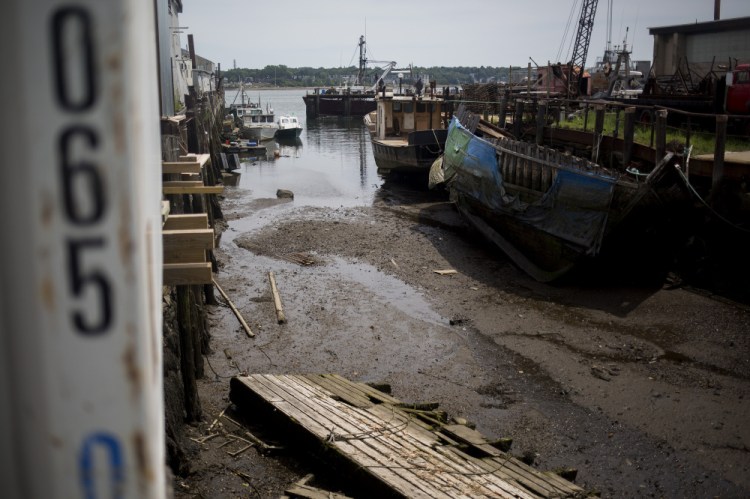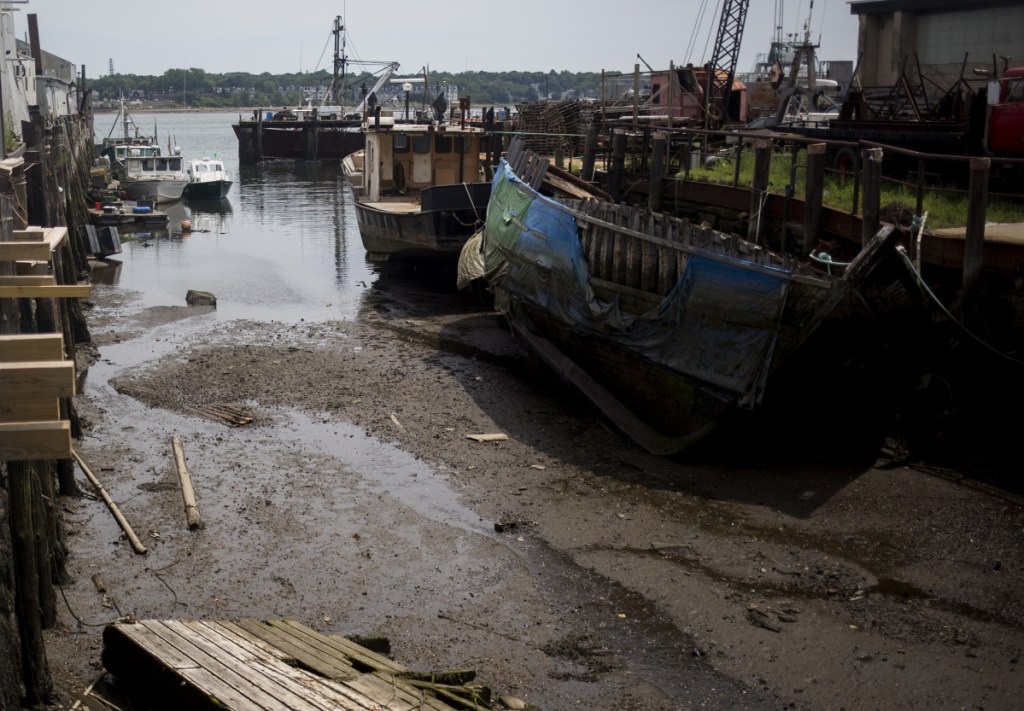After years of work, a plan is taking shape to dredge contaminated sediment from the Portland waterfront and deposit it in an underwater pit.
The next challenge for the group behind the effort is digging up enough money to finish the long-delayed project.
“A lot has happened, we are getting there,” said Charlie Poole, president of Proprietors of Union Wharf. “It has been slow, but at least in my eyes I always knew one of the biggest hurdles is securing financing.”
Short-term, the group needs $200,000 to finish site tests and prep work, and longer-term it needs $30 million for the whole dredging project. Coalition members gathered for a public meeting to take stock of the project Thursday in South Portland.
They are seeking a solution to generations of silt and sediment buildup that are threatening Portland’s working waterfront. Poole and other pier owners have lost berthing space because the water is no longer deep enough for fishermen and others to keep their boats there. As silt deposits keep growing, the problem gets worse.
“If we are going to remain a viable working seaport, we have to have water access,” Poole said.
SOLUTION ELUSIVE
For decades, a solution has been elusive. The waterfront sediment is likely heavy with contaminants from bygone heavy industry on the waterfront and overflow from combined storm water and sewage overflows. That material can’t be dumped in an offshore site and it is too expensive to test and dispose of on land.
About five years ago, a working group formed by the cities of Portland and South Portland came up with a solution: building a confined aquatic disposal – or CAD – cell somewhere in Portland Harbor and dump the wharf dredging there. CAD cell technology, essentially a deep pit underwater, is proven to hold contaminated sediment in place but has never been used in Maine. In 2015, the Portland Board of Harbor Commissioners received a $350,000 grant from the Brownfield land revitalization program to design and permit the project.
Four years later, the group selected a site for the CAD cell – a small cove near the Coast Guard Station in South Portland – but needs an extra $200,000 to finish environmental testing on the site and draw up dredging and construction permits.
With permits in hand, it can start looking for the $30 million the project is expected to cost.
The project still has plenty of unknowns, like the final design of the CAD cell, where the money will come from and how long it will take to get the plan up and running.
The working group has asked pier owners for detailed plans explaining their dredging needs so it can apply for permits and design the CAD cell.
ON THE HUNT FOR MONEY
It is also on the hunt for federal and state money to subsidize the cost to pier owners. If that money isn’t there, dredging and building the dump site will be too expensive for the owners and city governments to pay for, said Bill Taylor, a Pierce Atwood attorney working with the group.
“The goal is to make this affordable for the pier owners and the cities,” he said at Thursday’s meeting.
Despite the cost, advocates are optimistic they have a chance to finish the dredging after years of false starts. The working group laid the groundwork with pier owners, environmental groups, fishermen and other stakeholders to make sure everyone was on the same side before moving ahead with permitting, design and fundraising, said Tom Dobbins, chairman of the Board of Harbor Commissioners.
“My feeling is, we are getting there,” Dobbins said.
“The waterfront has been talking about this for 30 years at least, if not longer. Something has to be done to help the pier owners in Portland and South Portland with historic contamination.”
Peter McGuire can be contacted at 791-6325 or at:
pmcguire@pressherald.com
Twitter: PeteL_McGuire
Send questions/comments to the editors.





Comments are no longer available on this story